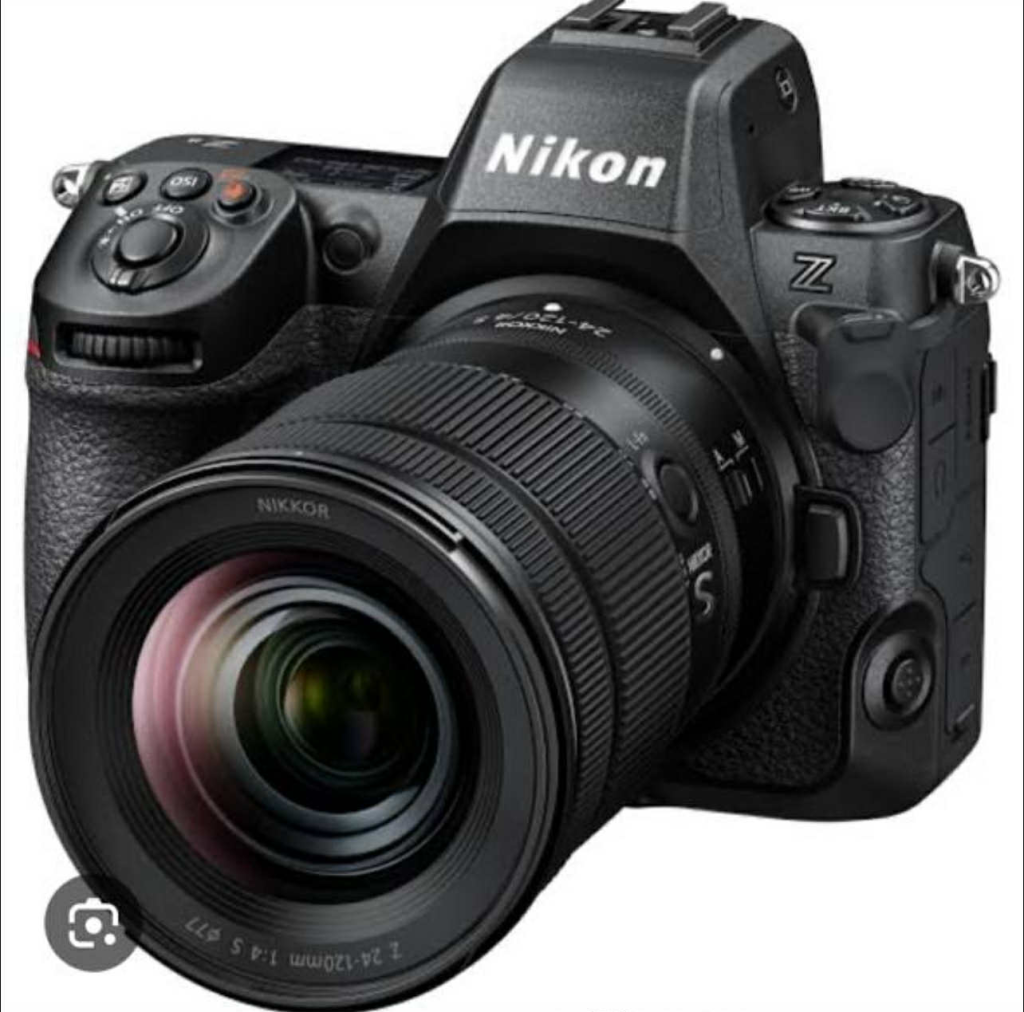The camera market in 2025 is dominated by mirrorless systems that combine speed, smart features, and versatility. Professionals and advanced hobbyists require a single piece of equipment that not only functions perfectly in both photography and videography, but is also robust and user-friendly. Of the diverse choices, the Sony Alpha 1 II, Canon EOS R5 Mark II, and Nikon Z8 are the three models that are always superior.

These cameras show what the modern imaging world can create, as they are outstanding in one specialization each, while still addressing a wide array of needs. Below is a more professional explanation of their certain features, quality, and why these two are the most and the compelling choices in 2025 of both photographers and filmmakers.
Sony Alpha 1 II: The Ultimate All-Round Professional Tool
Remarkable Image Quality and Speed
Sony Alpha 1 II is the flagship full-frame mirrorless camera from Sony and it’s tailored specifically for uncompromising professionals. Its 50.1-megapixel stacked BSI sensor offers remarkable resolution and dynamic range, with dual BIONZ XR processors with AI engine bringing new heights to processing speed.Using the electronic shutter, photographers can capture action at 30 frames per second, ensuring that not a single moment slips through.
Advanced Focus and Stabilization Tech
Autofocus is unquestionably one of the key strengths of the Alpha 1 II. With its 759 phase detection points, subject recognition powered by AI, and motorised zoom, the camera is able to zoom in and track people, animals, birds, and even vehicles with stunning accuracy. Real-time eye detection is now faster and more dependable than ever and thus even more helpful for wildlife and sports photographers. Alongside 8.5 stops of in-body stabilization, the Alpha 1 II makes possible pictures that are both sharp and detailed, even when the photographer is holding the camera under difficult conditions.
Cinematic Movement Features
Filmmakers using the Alpha 1 II can take advantage of 8K video at 30 fps, and 4K at 120p, as well as the professional colour grading and advanced stabilisation features. Cinematic active mode and framing stabliser ensure the footage is smooth, and it means that this camera can compete with cinema grade video cameras.
The Reasons Behind Its Popularity
Sports, wildlife, commercial, and editorial photographers all find the Sony Alpha 1 II extremely useful. This is because it offers impeccable image quality together with fast speeds, which is very crucial for these particular types of photography.Videographers looking for 8K video and advanced stabilization will find it equally impressive. For the professionals spanning different fields, this is by far the most balanced and the most thought after camera available today.
Canon EOS R5 Mark II: The Hybrid Shooter’s Dream
Smart Upscaled High-Resolution Imaging
In 2025, Canon’s EOS R5 Mark II models, in my opinion, the most versatile cameras. They fully take advantage of the original R5 and its 45-megapixel stacked sensor, and improve upon it substantially. What makes the camera unique and exceptional in its class is Canon’s revolutionary in-camera AI upscaling, which for the first time enables the creation of 180-megapixel equivalent images, a godsend for landscape, wildlife, and commercial photographers seeking incredible detail.

Speed, Stability, and Autofocus Accuracy
The R5 Mark II is both quick and trustworthy, as demonstrated by its 30 fps electronic burst shooting and 8.5 stops of stabilization. The R5 Mark II Dual Pixel Intelligent AF system and its 1,054 autofocus points unleash Full Eye Control AF and subject-recognition modes, creating a very versatile system coverage and smooth transitions.This is a major improvement for action and event photographers, as it enables subject acquisition and tracking to be done simply by looking through the electronic viewfinder.
Professional Video Features
With the EOS R5 Mark II, Canon has made shots in 8K RAW at 60p and 4K at 120p a reality, which makes the EOS R5 Mark II suitable for cinema productions and high-end content creation. To address thermal management issues, Canon has created a cooling grip as an optional accessory, and the addition of a full-size HDMI port is a further advantage for integrating the camera into bigger workflows.
Ergonomics and User Experience
The R5 Mark II does not deviate from Canon’s stellar reputation of ease of use, as it implements all the enhancements that come with a weather-sealed magnesium body to provide durability with user-friendliness, including color-coded menus and customizable buttons. Neither still photographers nor filmmakers have a lot to master, which makes it the ideal hybrid device.
Why It’s Used by Experts?
Canon EOS R5 Mark II’s features and functions are designed to serve the needs of wedding photographers, documentary filmmakers, and commercial clients who require a dependable product that can multitask.It’s outstanding all in all, whether it’s being used inside a studio, outdoors, or on an advanced movie set offering one of the best all-in-one packages available these days.
Nikon Z8: Flagship Performance Packed in a Small Frame
Professional Photography at an Affordable Price
Nikon’s Z8 is commonly referred to as the “mini Z9” since it offers almost all of the features of the Z9 in a body that not only is smaller but also lighter and less expensive. The Z8 has a 45.7 megapixel stacked sensor, which gives it excellent dynamic range and fantastic low-light performance, which, combined with a smaller system, makes it a complete pro’s sweetheart.
Speed and Video Flexibility
In video and still, the Z8 matches, and beats far more costly competition, offering 20 fps RAW bursts, 8K/30p, and 4K/120p video. Internal recording of 12-bit N-RAW and ProRes provides filmmakers enormous post-processing freedom. For hybrid photographers, it means effortless moves between professional still photography and cinematic video work.
Stability and Continuous Refining
Deep firmware updates have been studied to incorporate enhanced subject detection and pre-capture recognition, which, in combination with Nikon’s internal tuning, are designed to further develop the strengths already created. Such capabilities as these ensure the maintenance and longevity of the Z8 to remain competitive towards the future. The 5-axis internal stabilization provides 6 stops of compensation.
Value and Accessibility
With a price of $3,500 to $3,800, the Nikon Z8 offers exceptional value. The flagship features equip advanced-level or mid-level Nikon users, as well as Sony Alpha 1 II level users who do not have the budget to purchase such high-end products.
The Reason for its Professional Popularity
The Nikon Z8 fills the gap for wildlife, sports, and event photographers that need speed, resolution, and durability in a smaller package. The camera fills a unique niche with its strong video performance because it is a hybrid tool, and it is a terrific value, all while maintaining professional-level standards.
Conclusion: Which Camera is Right for You?
While each of these cameras is cutting-edge for the year 2025, modern technology and the innovations it brings limits their strengths and functionalities to particular niches:
• Sony Alpha 1 II: ‘For those who demand the quickest speed and highest resolution and smartest autofocus even in stills and video’ Sony Alpha 1 II would still retain the crown.
• For those who prefer EOS R5 Mark II for value the most, ‘evert intuitive control with the widest resolution flexibility no matter the shooting condition’ will stick in their mind.
• As for the Z8, ‘for those who want flagship performance for less and in more compact’ will admire the most.
These three models in unison set the benchmark for mirrorless devices. No matter if you prefer blistering speed, hybrid narratives, or sheer goodness of it, with these the bar will be set 2025.























1 thought on “The 3 Best Cameras of 2025: Quality, Features, and Why They Stand Out”
Thanks for sharing.